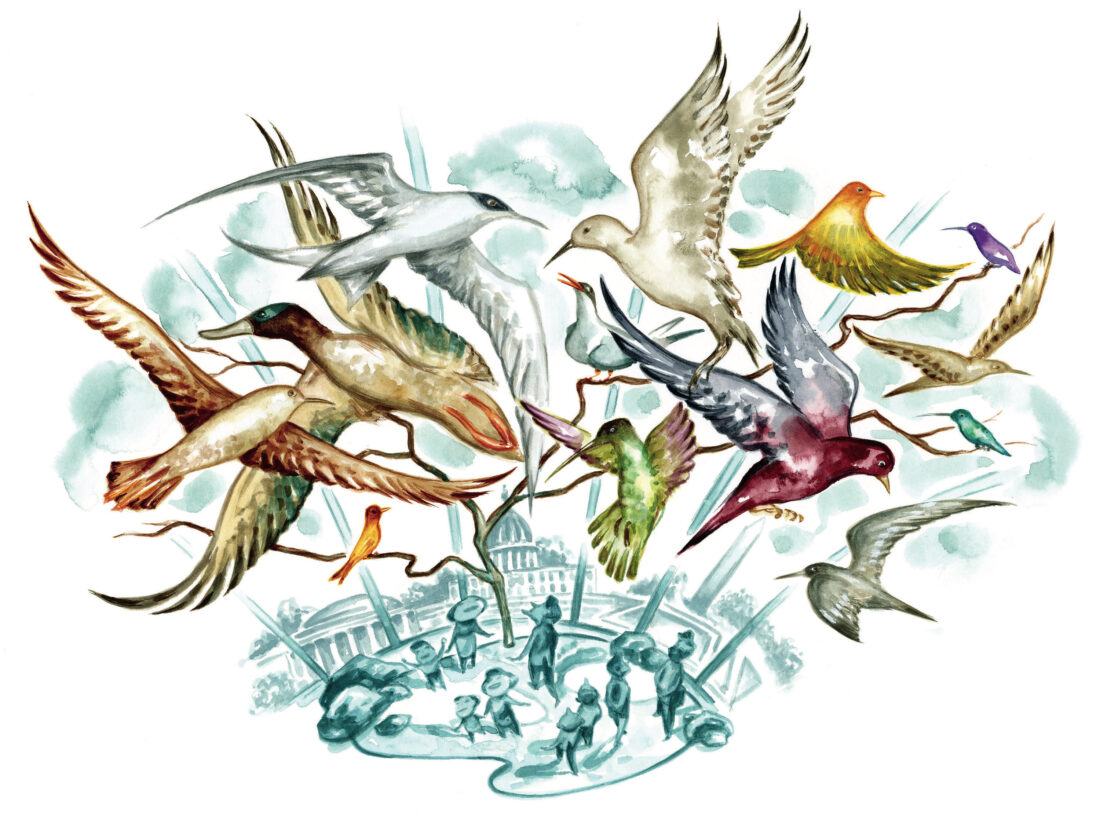While zoos historically built aviaries around exotic, international birds, when the Smithsonian’s National Zoo looked to reimagine its 1928 Bird House, it took a local approach. “We wanted to tell the story of our own backyard birds,” says Sara Hallager, curator of birds, “which I would argue are just as beautiful as any other bird anywhere else in the world.” After nearly fifteen years of planning, and after shutting down in 2017 for renovations, the Bird House will reopen this spring, celebrating such avian stars as the wood thrush, D.C.’s official bird. Just inside the historic brick building, visitors pass beneath an original mosaic tile arch embellished with colorful macaws and toucans. The transformed space features expansive skylights treated to prevent bird collisions, and an observatory for live tracking demonstrations. The zoo’s first bilingual Spanish/English exhibits immerse visitors in bird journeys through three environments. In the warm and humid coffee farm aviary, for instance, coffee plants grow beneath shady trees, providing layers of vegetation for wintering warblers and tanagers. “It emphasizes how native migratory species moving back and forth between the tropics and here connect us biologically, and hopefully culturally,” says Scott Sillett, head of the Smithsonian Migratory Bird Center. Some seventy-five species of migratory shorebirds, songbirds, and waterfowl fly around in replicas of their natural habitats. “The birds have a big space to roam and explore, and the people have the walkway in the exhibits,” zoo staff member Jennifer Zoon says. “It’s like we’re in their world.” nationalzoo.si.edu
Southern Agenda
For the Birds

Illustration: Tim Bower

